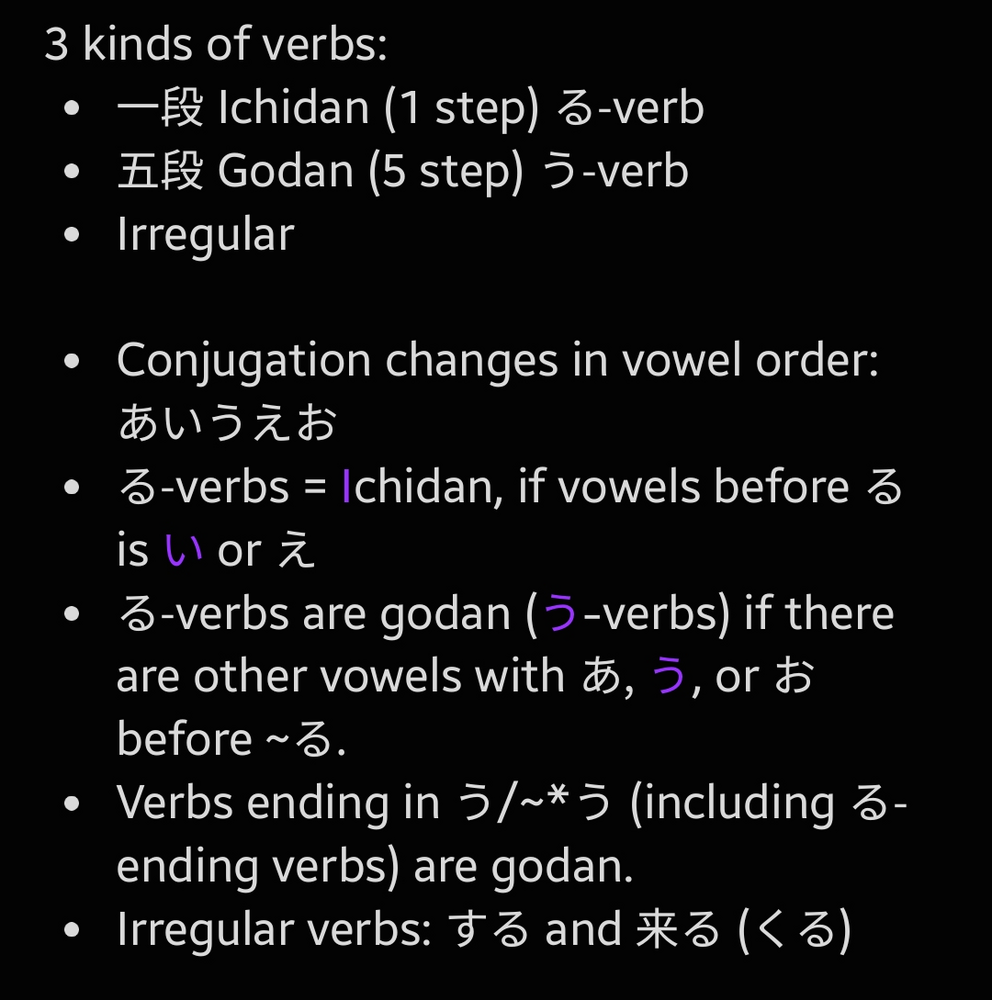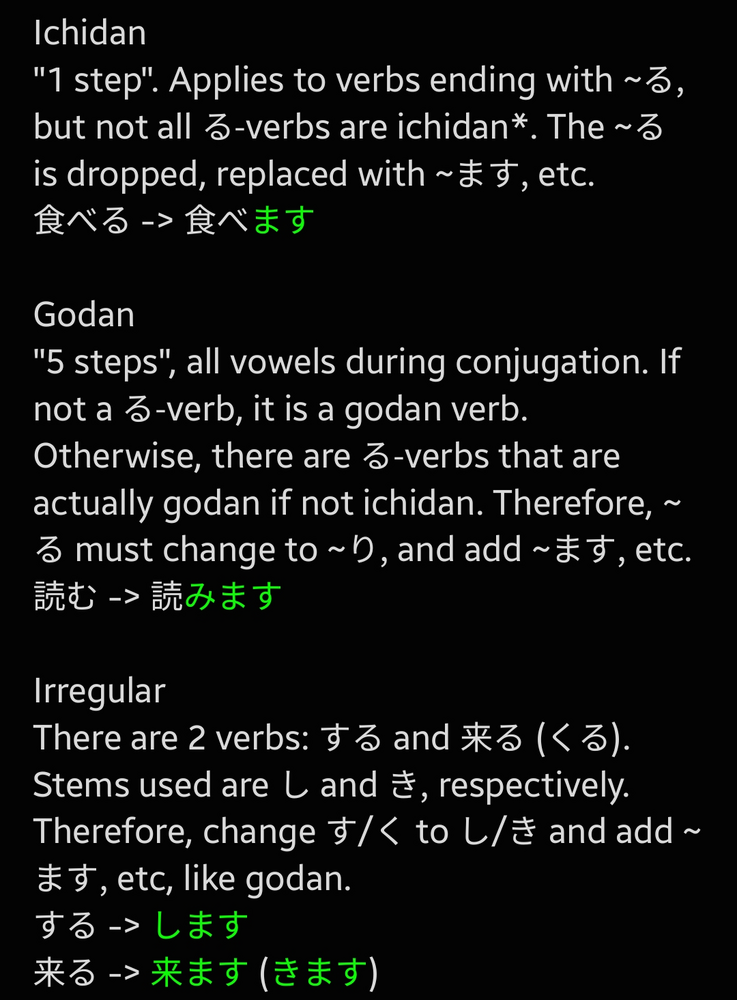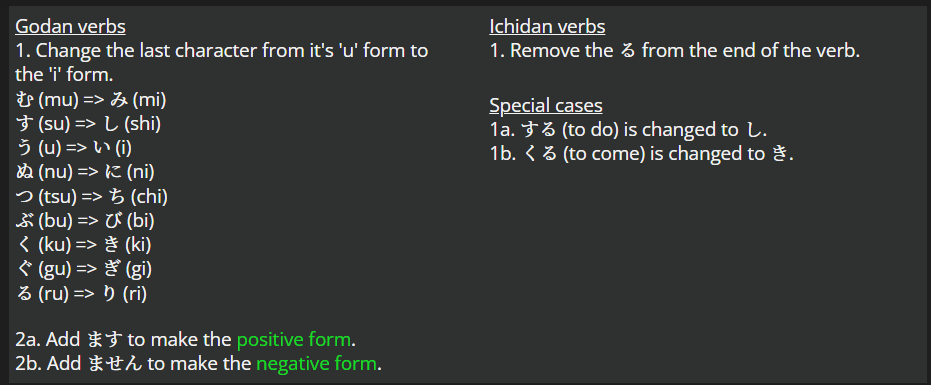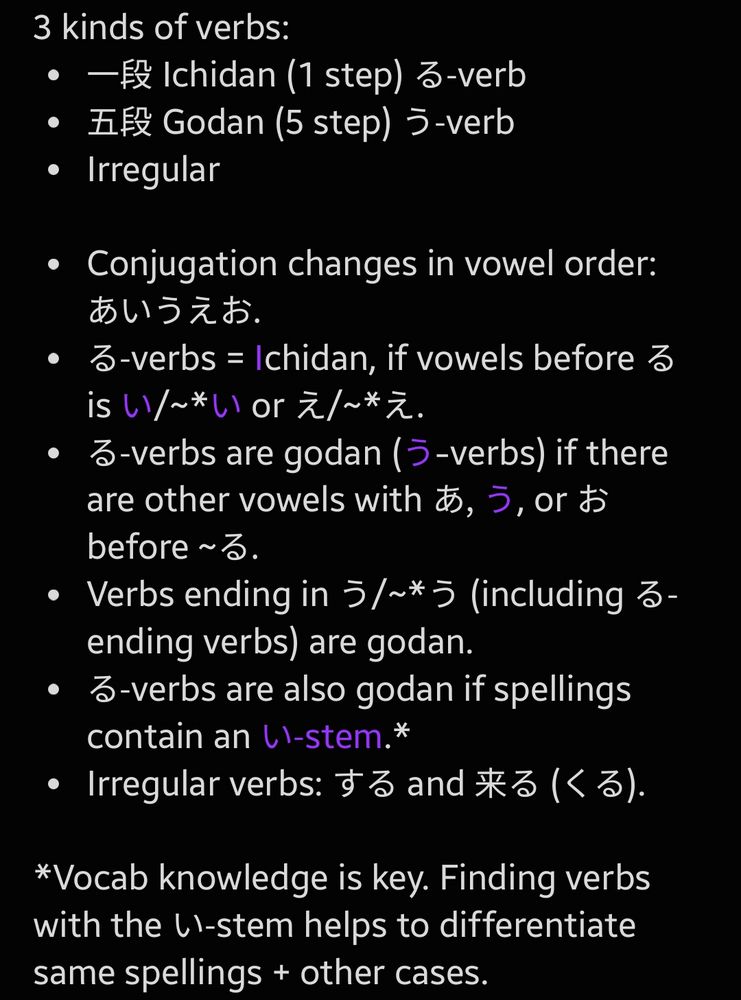掲示板 Forums - Verb conjugation mnemonics
Top > 日本語を勉強しましょう / Let's study Japanese! > Anything About Japanese Getting the posts
Top > 日本語を勉強しましょう / Let's study Japanese! > Anything About Japanese
In the last few days, I started going over learning verb conjugations. With the vast amount of writing and cheat sheets on the subject, it was a journey to unravel this birdnest of information into a condensed version to identify the markers and to deal with them. I just wanna know how to use them, not what they are, since I'm putting in some practice.
So, here I have a couple pages of my color-coded notes to show on how I'm approaching it so far. Once I sorted out the pairing of る-verbs/う-verbs being ichidan and godan (as some resources like to call it instead) I think I have finally demystified these functions to properly conjugate things the right way.


This is part of a very rough draft of what I know so far, so I have the feeling this isn't everything. Yet as I've attempted to apply this in practice, it seems to be working for me. I kind of have a better visualization of what I need to do, so maybe I'm on the right track. I thought there might be more to it than that. Would I be missing anything? Is it that simple? I have a few other stuff following this, mainly about different tenses, but I haven't covered that part in depth just yet.
EDIT: Ugh, without thinking then, I now realize that this indeed isn't enough. I have just begun to notice that some verbs that should ideally be ichidan, are in fact godan. Now I need to factor another condition to know that! 
May you please post whatever you reach further so that I take screenshots of it?
There's this table in the grammar section for masu that you may find useful
For each different conjugation e.g. potential, causative, etc., you can find a similar table in the grammar section.

There's this table in the grammar section for masu that you may find useful
For each different conjugation e.g. potential, causative, etc., you can find a similar table in the grammar section.

That more or less is what I was covering. I'm not getting into the different conjugation forms, since it had gotten easy for me how to treat ichidan and godan verbs. The trouble was identifying the verb at a glance, which unless I looked it up or someone told me which one it was, it's not that simple. For example:
https://media.japanesewithanim...
At this point, I may have to just recognize the verb from memory.
If it doesn't rhyme* with いる or える then it is godan
If it does rhyme with いる or える then it is probably ichidan (Assume it is until you know it is an exception. The exceptions just have to be memorized)
* verbs that end in "iru" in romaji rhyme with いる, verbs that end in "eru" in romaji rhyme with える
あぁぁぁぁぁぁ!!!!
わかってる!!!
Now it seems I have something to tell the difference! Vital information here. Yeesh. This is easy.
Now all I have to do is fix my note and that looks to be set. I'll repost when I get to it.
Meantime, I'm gonna enjoy this:
Here are two resources that I think will help you immensely.
(10 hour て form song loop)
https://youtube.com/watch?v=P029zwYS4Cs
(Verb/Adjective conjugation practice website)
So far now I just did a bit of a dive on how well the godan る-verb trick held up. I can say that with words with the same spellings even, this holds up well to what I've seen so far for the most part. I'm still working on making this clear.
I noticed an interesting snag even if approaching the trick. There are still godan る-verbs which aren't paired in other words. Disappointing.
Though since a large majority can be compared in this manner, it seems like there's really just a small sample of those verbs, and the rest can still be assessed by their spellings with other words.
I guess it does hinge on one's familiarity with the verbs and their use in spellings of other words, even for the ones which seem to stand alone. As long as they remain in their respective ichidan or godan classification, the conjugation process remains the same. Have to be real intimate with vocabulary.
Alright, on top of the homework I did last night, I edited the stuff I was missing. Here's the second draft. I think this looks good?



Short and to the point. I can see so far that this breaks down the fundamentals to verbs. Now starting on the て form stuff, it seems to hold up and the rest will follow.
行きましょう!